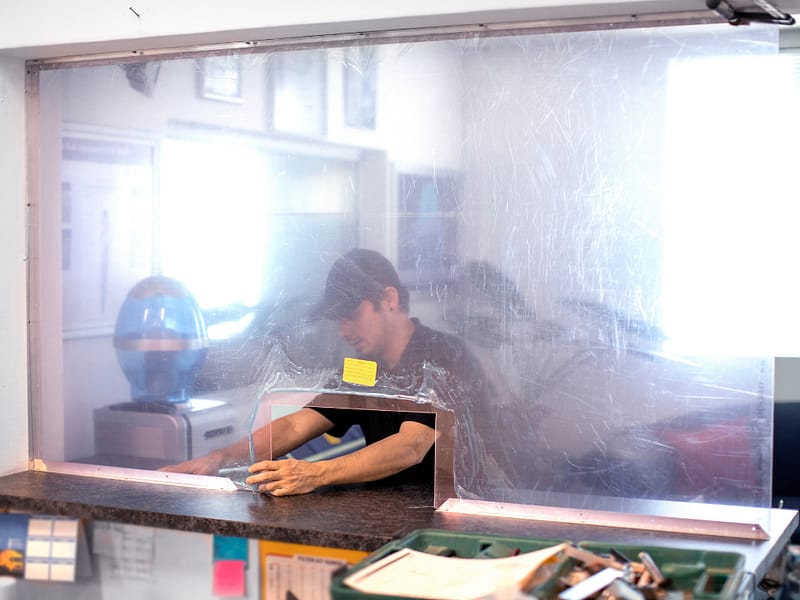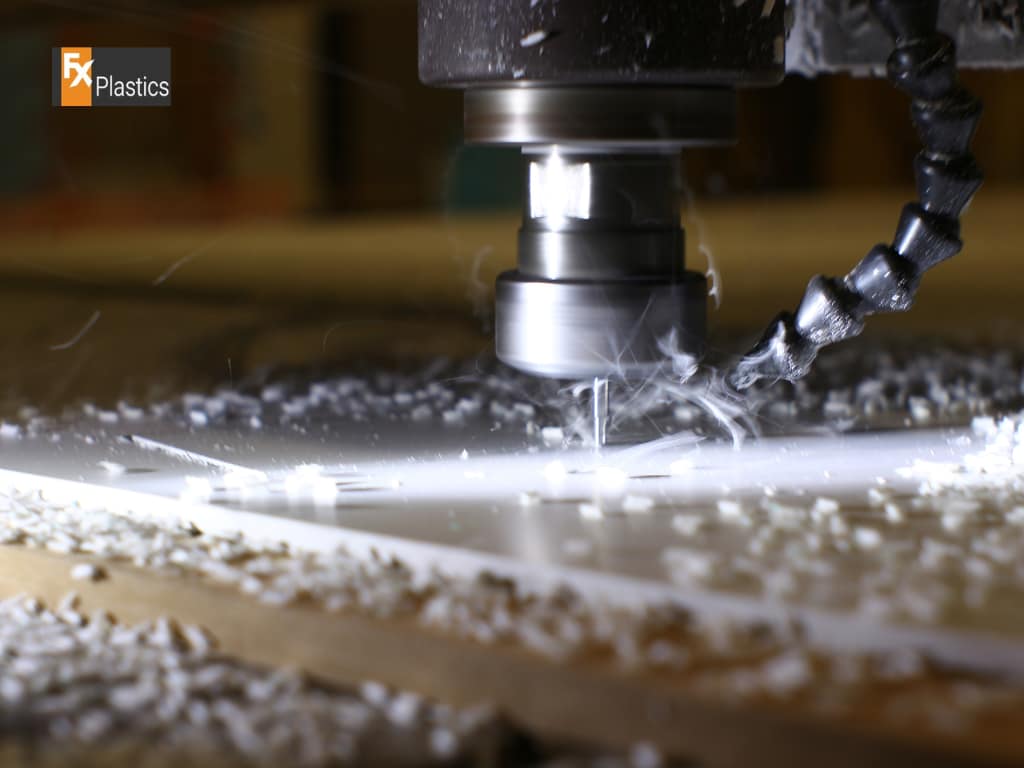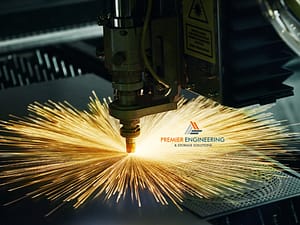Hospital hygiene screens are essential components in healthcare environments, playing a critical role in maintaining sterility and preventing the spread of infections. These screens act as physical barriers, creating a safer environment for patients, staff, and visitors. By separating different areas within hospitals, they help contain contaminants and reduce the risk of cross-contamination.
Hygiene screens are particularly vital in high-risk areas such as operating rooms, intensive care units (ICUs), and emergency rooms (ERs), where the highest levels of cleanliness and infection control are necessary. They are also used in general wards, outpatient clinics, and reception areas to enhance privacy and safety.
Fixed vs. Portable Hygiene Screens
Description and Uses of Fixed Hygiene Screens
Fixed hygiene screens are permanently installed barriers designed to provide long-term solutions for infection control. These screens are typically used in areas that require continuous separation and high levels of sterility. Common applications include:
- Operating Rooms: To maintain a sterile environment during surgeries.
- Isolation Wards: To contain infections and protect other patients and staff.
- Intensive Care Units (ICUs): To ensure a controlled and clean environment for critical care patients.
Benefits and Applications of Portable Hygiene Screens
Portable hygiene screens offer flexibility and can be moved as needed to different locations within the hospital. They are ideal for temporary setups, emergency situations, and areas with changing needs. Key benefits and uses include:
- Emergency Rooms: To quickly create isolated spaces during outbreaks or emergencies.
- Outpatient Clinics: For temporary separation during high patient volume periods.
- General Wards: To provide additional privacy and infection control when required.
Material Choices for Hygiene Screens
Overview of Common Materials: Acrylic, Perspex, and Glass
Hygiene screens are available in various materials, each offering unique properties and benefits. Common materials include:
- Acrylic Screens: Known for their lightweight nature and high clarity, acrylic screens are shatter-resistant and easy to clean, making them a popular choice for many hospital settings.
- Perspex Screens: Similar to acrylic, Perspex is a brand name for high-quality acrylic that offers excellent clarity and strength. Perspex screens can be custom cut to size, providing flexibility for different applications.
- Glass Screens: Glass offers superior scratch resistance and durability. However, it is heavier and more expensive than acrylic or Perspex, making it less practical for portable applications.
Advantages and Disadvantages of Each Material
- Acrylic Screens:
- Advantages: Lightweight, shatter-resistant, high clarity, cost-effective.
- Disadvantages: More prone to scratching than glass, requires careful cleaning.
- Perspex Screens:
- Advantages: High clarity, strong and durable, can be custom cut to size.
- Disadvantages: Similar to acrylic, more prone to scratching than glass.
- Glass Screens:
- Advantages: Highly durable, scratch-resistant, excellent clarity.
- Disadvantages: Heavy, more expensive, less suitable for portable use.
Customizable Options for Different Departments
Tailoring Screens to Fit Specific Hospital Areas
Different hospitals hygiene screens departments have unique requirements for hygiene screens. Customizing screens to meet these needs ensures optimal functionality and safety. Examples include:
- Emergency Rooms (ERs): Screens should be easily movable and quickly deployable to manage patient flow and isolate infectious cases.
- Intensive Care Units (ICUs): Screens need to provide high-level infection control while allowing for visibility and monitoring of patients.
- General Wards: Screens can offer privacy and basic infection control, with options for semi-permanent installation.
Custom Sizing and Cutting Options for Perspex and Acrylic Screens
Perspex and acrylic screens can be custom cut to size, providing flexibility to fit various spaces and requirements. This customization includes:
- Exact Dimensions: Ensuring the screens fit perfectly in designated areas.
- Custom Shapes: Adapting screens to fit around equipment or architectural features.
- Thickness Options: Choosing the appropriate thickness for durability and safety.
Pros and Cons of Acrylic Screens
Benefits of Using Acrylic Screens in Hospitals
Acrylic screens are a popular choice in hospital settings due to several key advantages:
- Lightweight and Easy to Install: Acrylic screens are lighter than glass, making them easier to handle and install. This is particularly beneficial for portable screens that need to be moved frequently.
- High Clarity and Visibility: Acrylic provides excellent transparency, allowing clear visibility. This is crucial in healthcare settings where patient monitoring is essential.
- Shatter-Resistant: Unlike glass, acrylic is less likely to shatter upon impact, reducing the risk of injury and making it a safer option in busy environments.
- Cost-Effective: Acrylic screens are generally more affordable than glass screens, making them a budget-friendly option for many healthcare facilities.
- Customizable: Acrylic can be easily cut to size and shaped to fit specific requirements, offering flexibility in design and application.
Potential Drawbacks and Considerations
Despite their benefits, acrylic screens have some potential drawbacks:
- Scratch Susceptibility: Acrylic is more prone to scratching compared to glass. While scratches can be minimized with proper care, they can affect the screen’s clarity over time.
- UV Sensitivity: Prolonged exposure to UV light can cause acrylic to yellow or become brittle. Special UV-resistant coatings can help mitigate this issue.
- Chemical Sensitivity: Acrylic can be damaged by certain chemicals. It is essential to use appropriate cleaning products to avoid degradation.
- Less Heat Resistance: Acrylic is less heat-resistant than glass, which can limit its use in high-temperature areas.
Choosing the Right Screen for Infection Control
Factors to Consider for Infection Control When Selecting Screens
When selecting hygiene screens for infection control, several factors must be considered:
- Material Hygiene: The screen material should be non-porous and easy to disinfect. Acrylic and Perspex are good choices as they can be thoroughly cleaned and disinfected.
- Durability: The screen should withstand frequent cleaning and disinfecting without deteriorating. It should also be resistant to impact and wear.
- Transparency: Clear screens allow for visual monitoring while maintaining separation, which is crucial in medical settings.
- Ease of Installation and Removal: Screens should be easy to install and remove, especially in areas where they may need to be repositioned frequently.
- Compliance with Regulations: Ensure the screens meet all relevant health and safety regulations and standards.
How Different Types of Screens Contribute to Hygiene and Safety
- Fixed Screens: Provide a permanent barrier in high-risk areas, offering consistent protection and reducing the need for frequent repositioning.
- Portable Screens: Allow for flexible infection control, ideal for temporary isolation of patients or quick response to outbreaks.
- Acrylic and Perspex Screens: These materials are easy to clean and disinfect, making them suitable for both fixed and portable applications.
Installation and Maintenance
Guidelines for Proper Installation of Hygiene Screens
- Follow Manufacturer Instructions: Always adhere to the manufacturer’s guidelines for installation to ensure safety and effectiveness.
- Secure Fixing: Ensure screens are securely fixed to prevent accidental dislodgement. Use appropriate brackets or stands for stability.
- Height and Placement: Install screens at appropriate heights and positions to maximize their protective benefits and ensure they do not obstruct essential views or access.
Tips for Cleaning and Maintaining Perspex and Acrylic Screens
- Regular Cleaning: Clean screens regularly using a soft cloth and mild detergent. Avoid abrasive cleaners that can scratch the surface.
- Disinfection: Use disinfectants recommended by the manufacturer. Ensure the disinfectant is compatible with acrylic or Perspex cut to size to prevent damage.
- Scratch Prevention: Use scratch-resistant coatings if possible. Handle screens with care to avoid contact with sharp objects.
- Inspection and Maintenance: Regularly inspect screens for damage or wear. Replace screens that are significantly scratched, cracked, or compromised.
Cost Considerations and Budgeting
Comparing Costs of Different Types of Hygiene Screens
- Material Costs: Acrylic and Perspex are generally more affordable than glass, making them cost-effective choices for large installations.
- Installation Costs: Consider the ease of installation when budgeting. Portable screens may have lower installation costs compared to fixed screens that require permanent fixtures.
- Maintenance Costs: Factor in the long-term costs of maintaining and replacing screens. Acrylic may require more frequent replacement due to scratching but is less expensive initially.
Budgeting for Installation and Maintenance
- Initial Investment: Calculate the upfront costs of purchasing and installing the screens. Include any customization fees if specific sizes or shapes are required.
- Long-Term Maintenance: Allocate budget for regular cleaning supplies, disinfectants, and potential replacements. Plan for periodic inspections and maintenance to prolong the life of the screens.
- Cost-Benefit Analysis: Weigh the initial costs against the benefits of infection control and improved hygiene. Investing in high-quality screens can reduce infection rates and enhance overall safety, leading to long-term savings.









